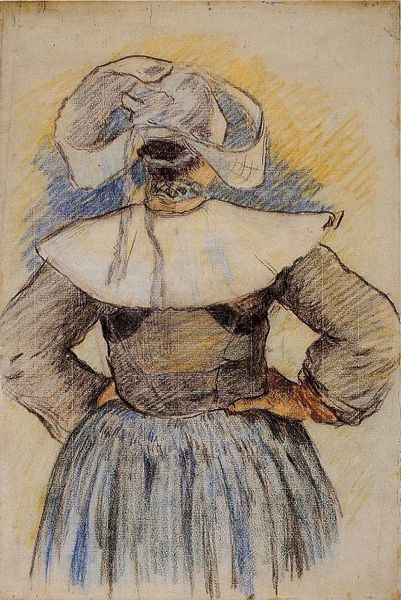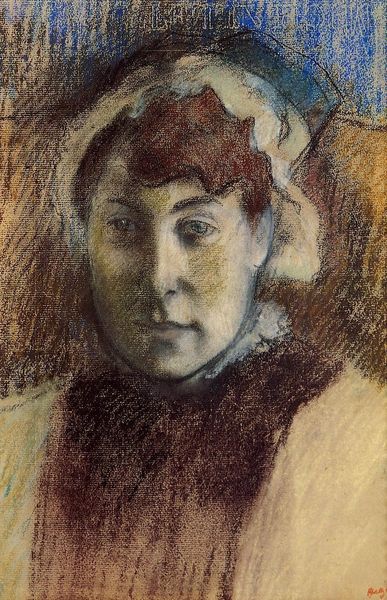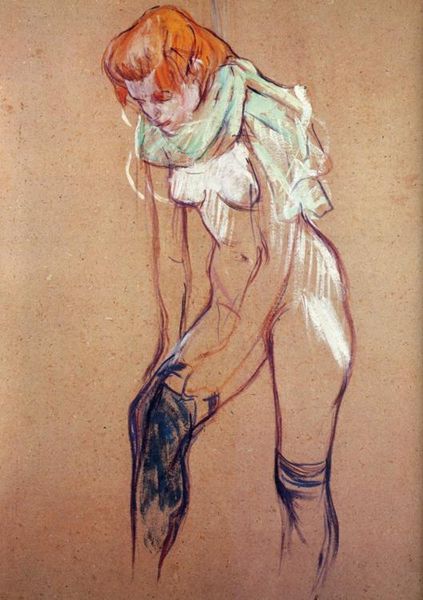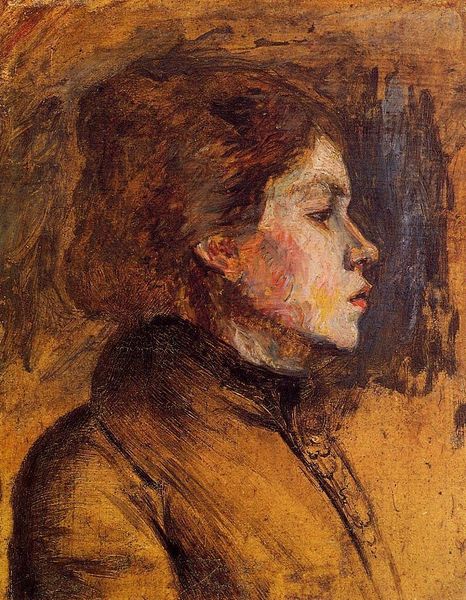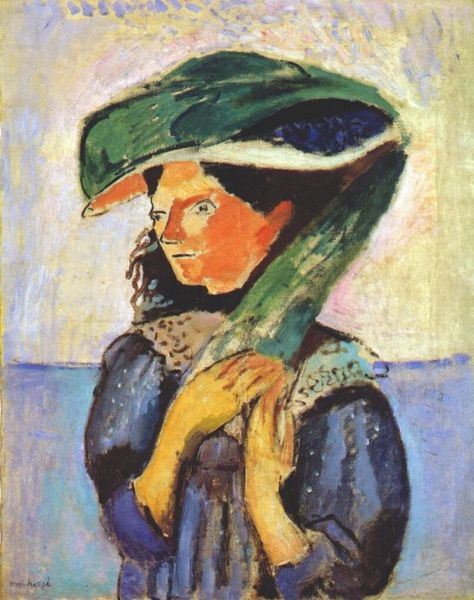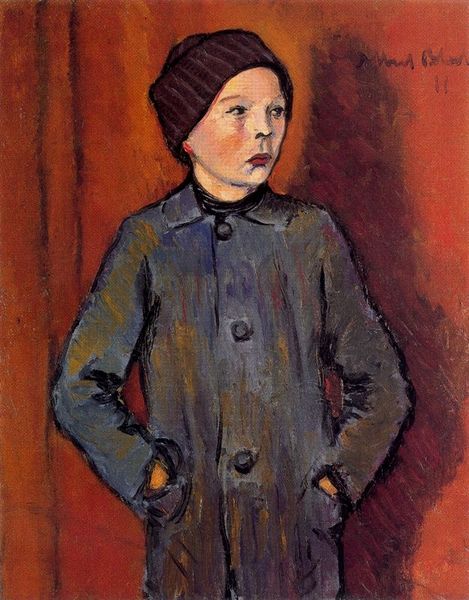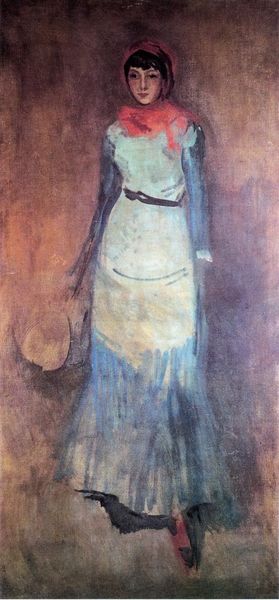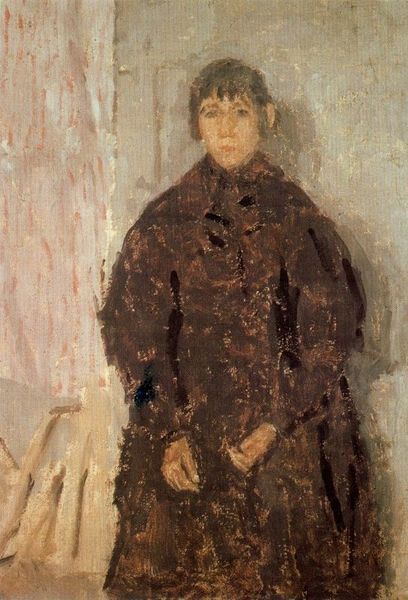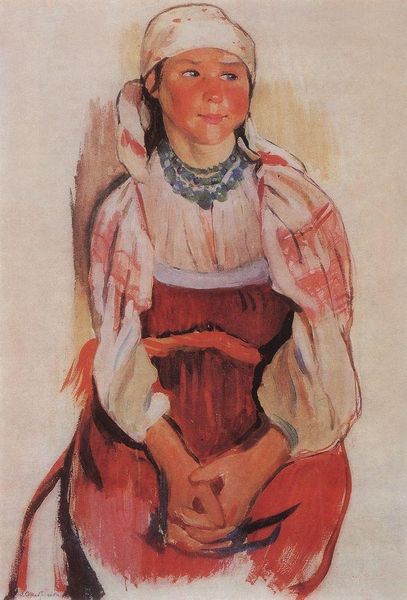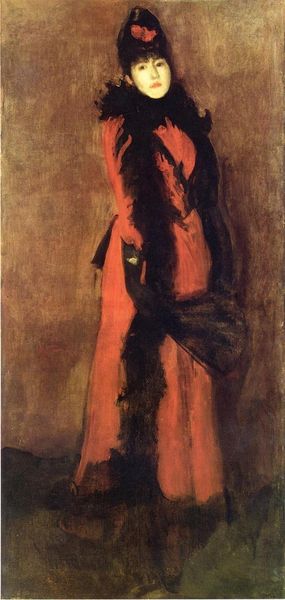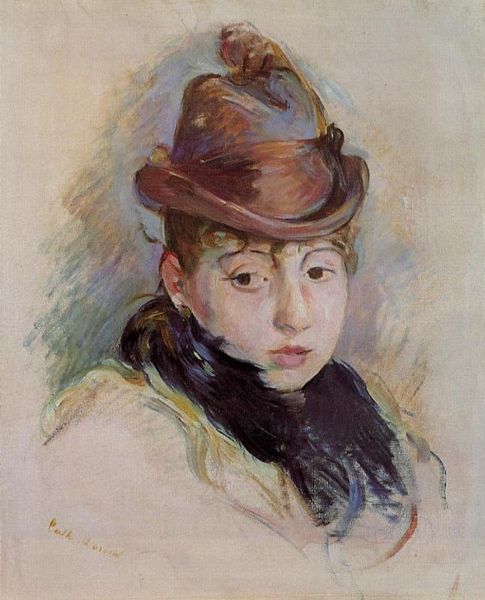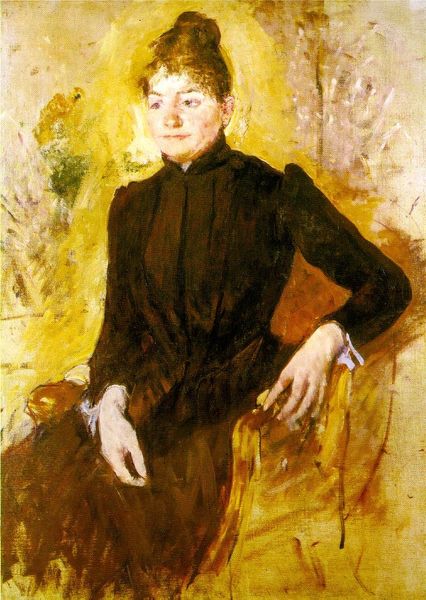
painting, watercolor
#
portrait
#
painting
#
oil painting
#
watercolor
#
child
#
expressionism
#
portrait drawing
#
watercolour illustration
Copyright: Public domain
Curator: Standing before us, we have Egon Schiele’s “Girl with Hood,” executed around 1910 using both oil paint and watercolor. The portrait now resides in a private collection. Editor: First thing that hits me is the rawness, that nervous energy almost crackling off the paper. She looks like she's been caught mid-thought, or maybe she's just seen a ghost. The palette, the ochre and burnt umber, it all feels very grounded, earthy, but her eyes – those almost translucent eyes – give it a haunted edge. Curator: Indeed. The earth tones you note contrast significantly with the child’s almost spectral visage, creating a tension that speaks volumes. We can examine the formal properties to see this further: notice how Schiele uses elongated brushstrokes to create a sense of unease, a visual correlate to the psychological states he was known to explore. The simplification of form—the reduction of detail in her clothing and the background—directs the viewer’s attention entirely to her face, which becomes the focal point for emotional interpretation. Editor: And it works! Schiele has reduced this poor kid to almost raw feeling. The looseness of the wash emphasizes her fragility. It's like he’s peeled back the polite portrait surface and exposed the anxiety simmering beneath. It reminds me a bit of Edvard Munch. There's a similar kind of…anguish. Curator: While one can draw certain parallels to the Expressionist tendency of Munch, Schiele differentiates himself through the overt self-consciousness and psychoanalytic depth rendered through formal manipulation. One could argue this work participates in the semiotics of childhood innocence corrupted, an aesthetic preoccupation gaining prominence in the era. Editor: Yeah, I buy that. But it's more than just a theoretical exercise for me. The slight upturn of her lips…it’s as if she's daring you to look away, inviting you into her unease. Very unnerving! Curator: Certainly, Schiele's talent lay in disrupting expected viewing patterns and, in this case, societal perceptions of childhood, thereby forcing confrontation. This analysis, as such, becomes quite self-reflective in turn, doesn't it? Editor: Exactly. Makes you wonder what Schiele himself was confronting at the time he put brush to paper, watercolor to canvas! A potent, unforgettable image.
Comments
No comments
Be the first to comment and join the conversation on the ultimate creative platform.
